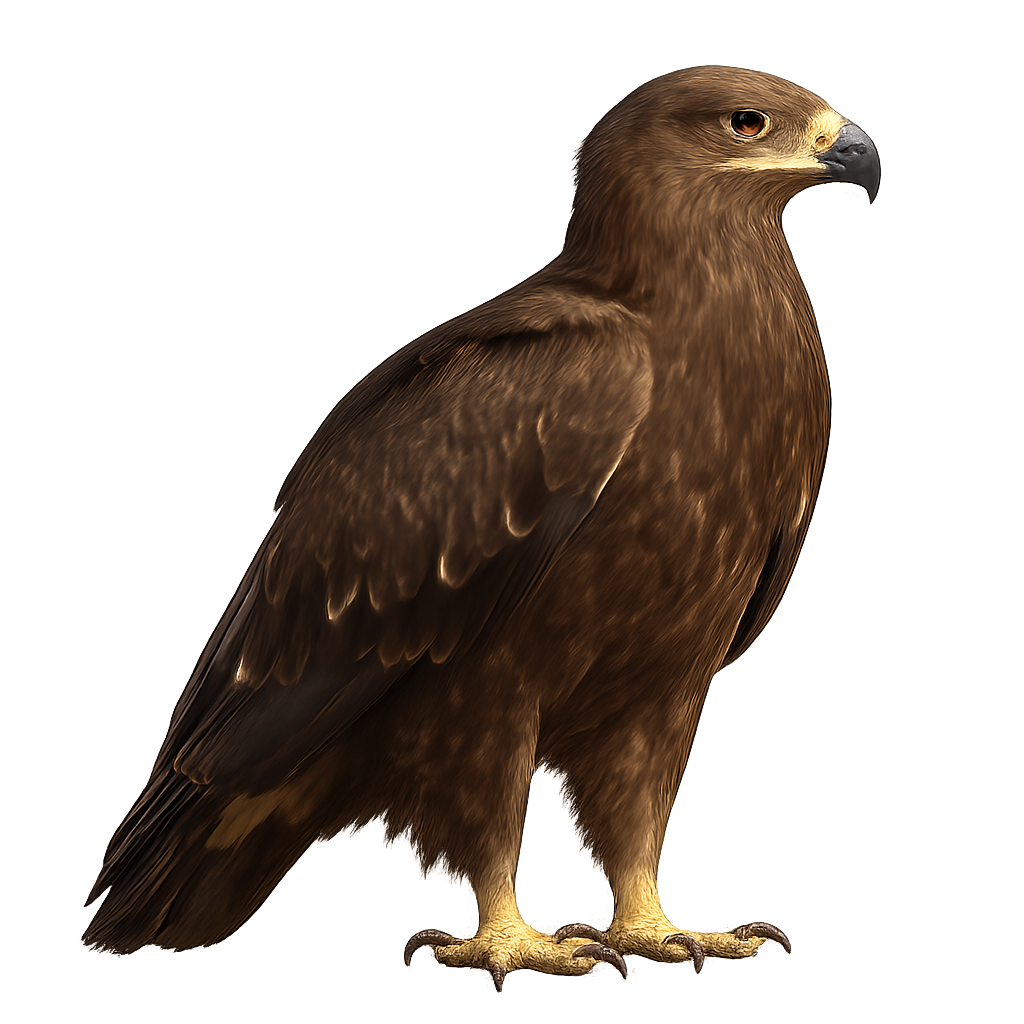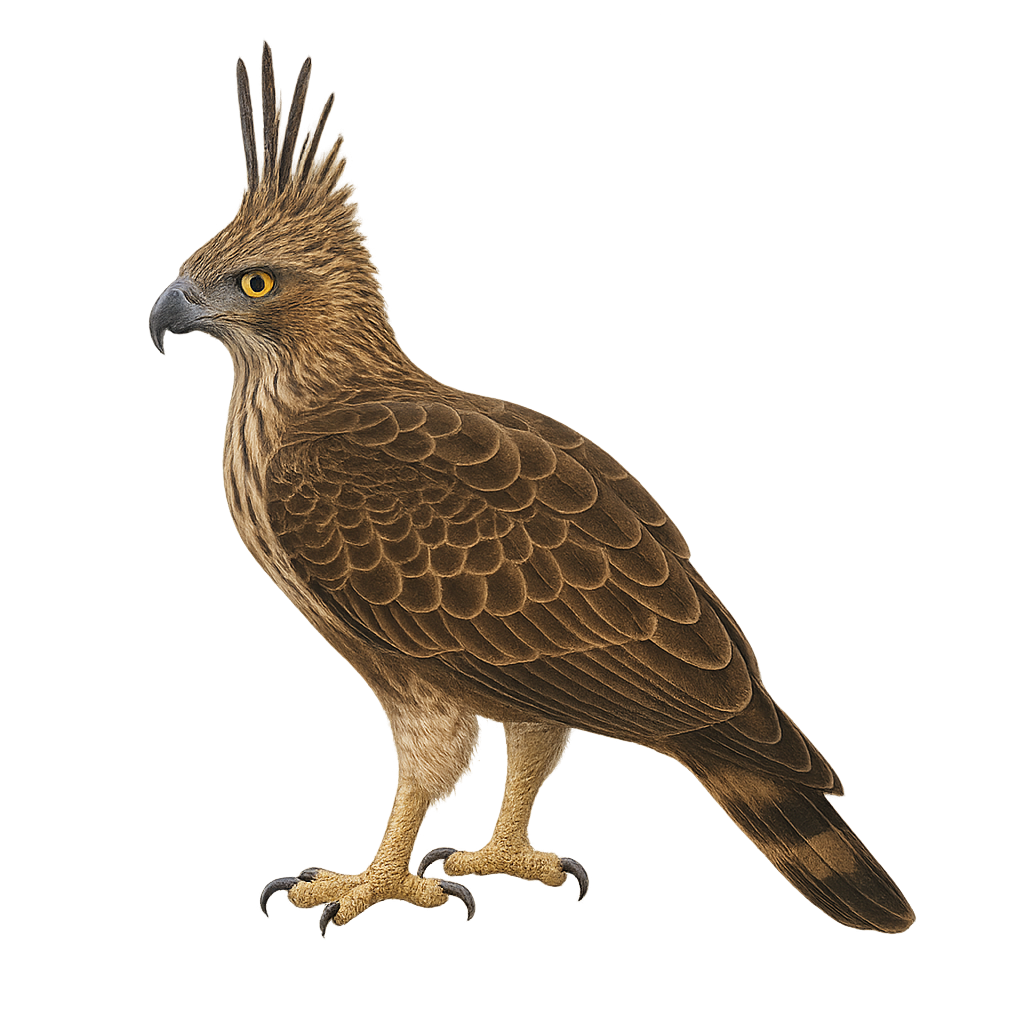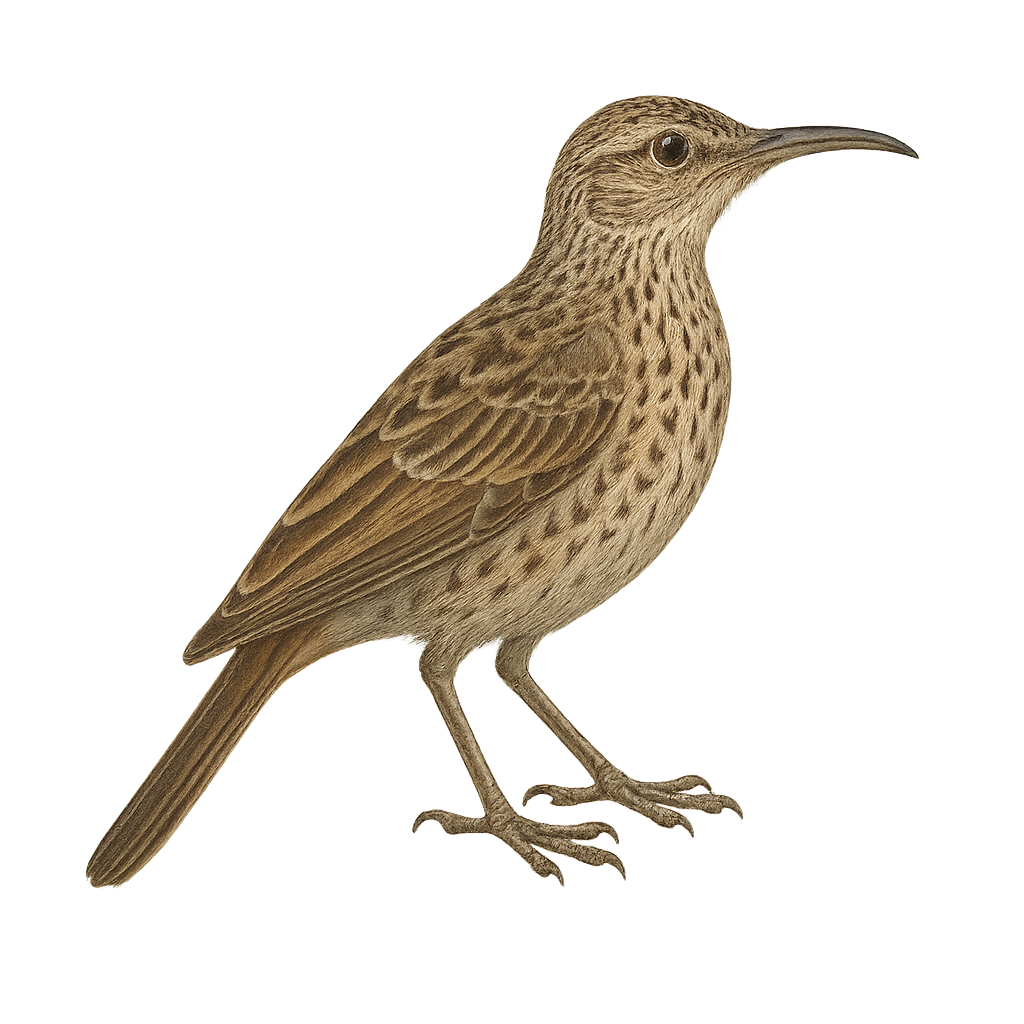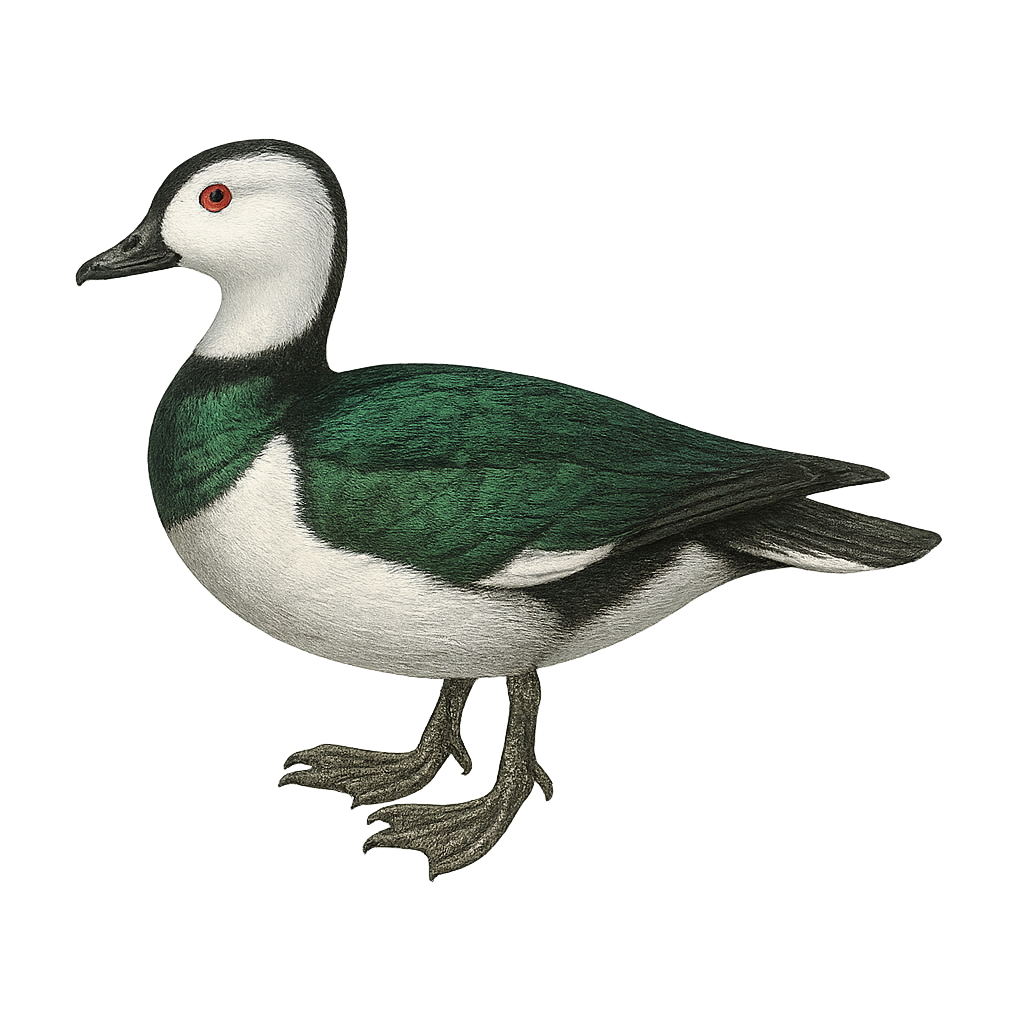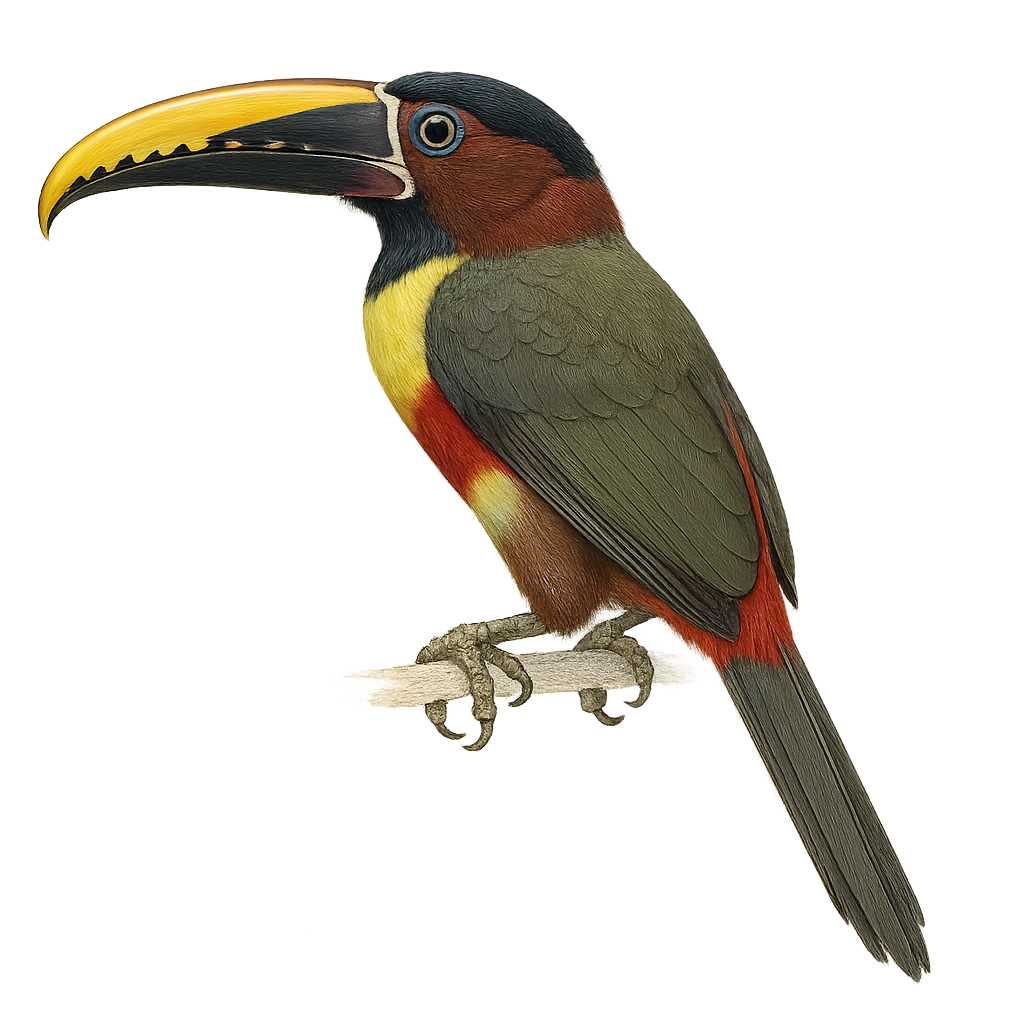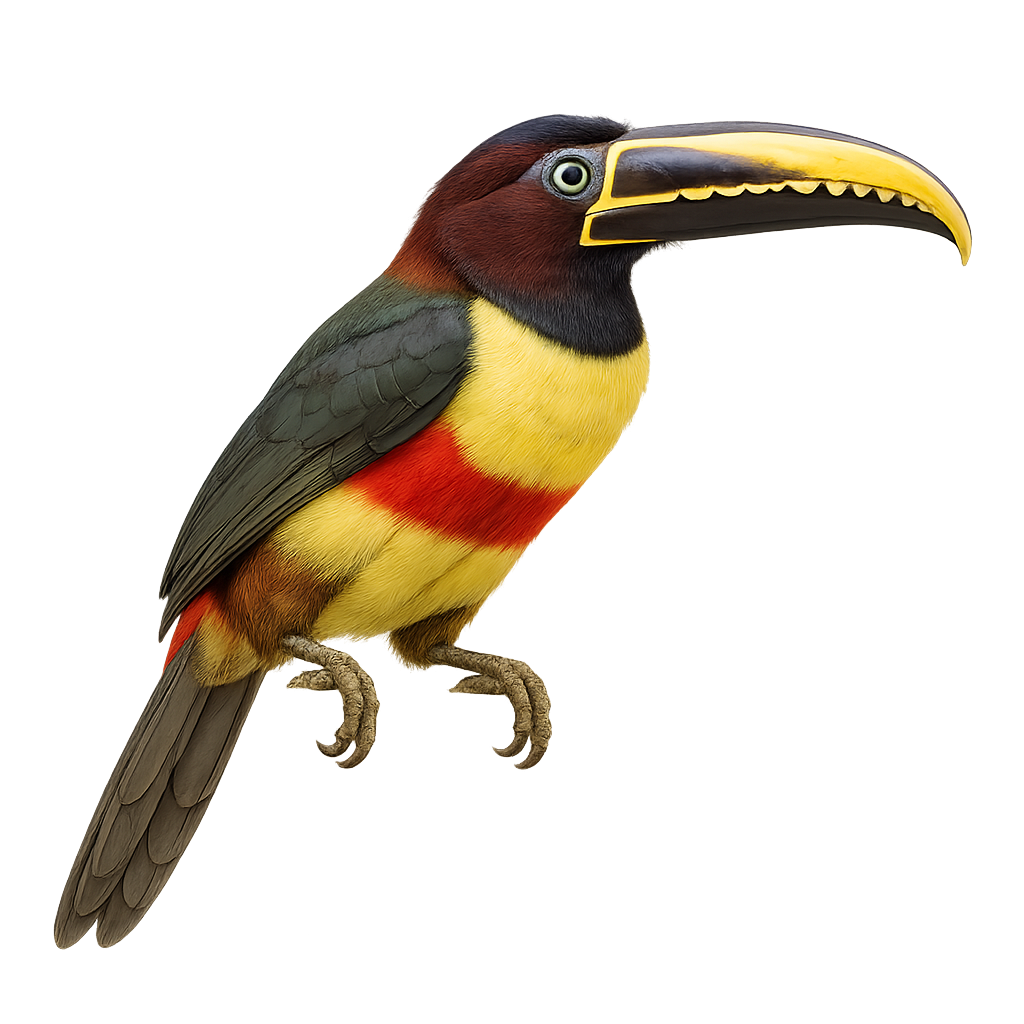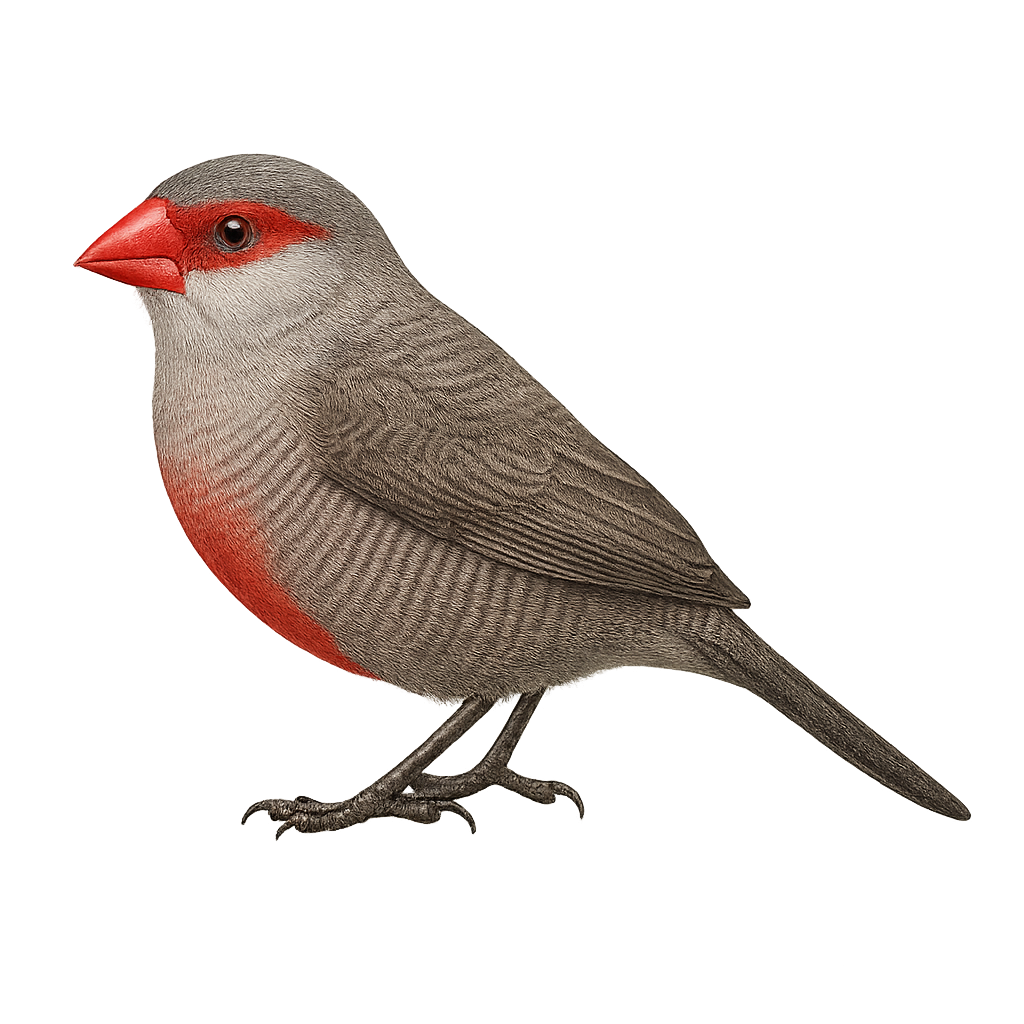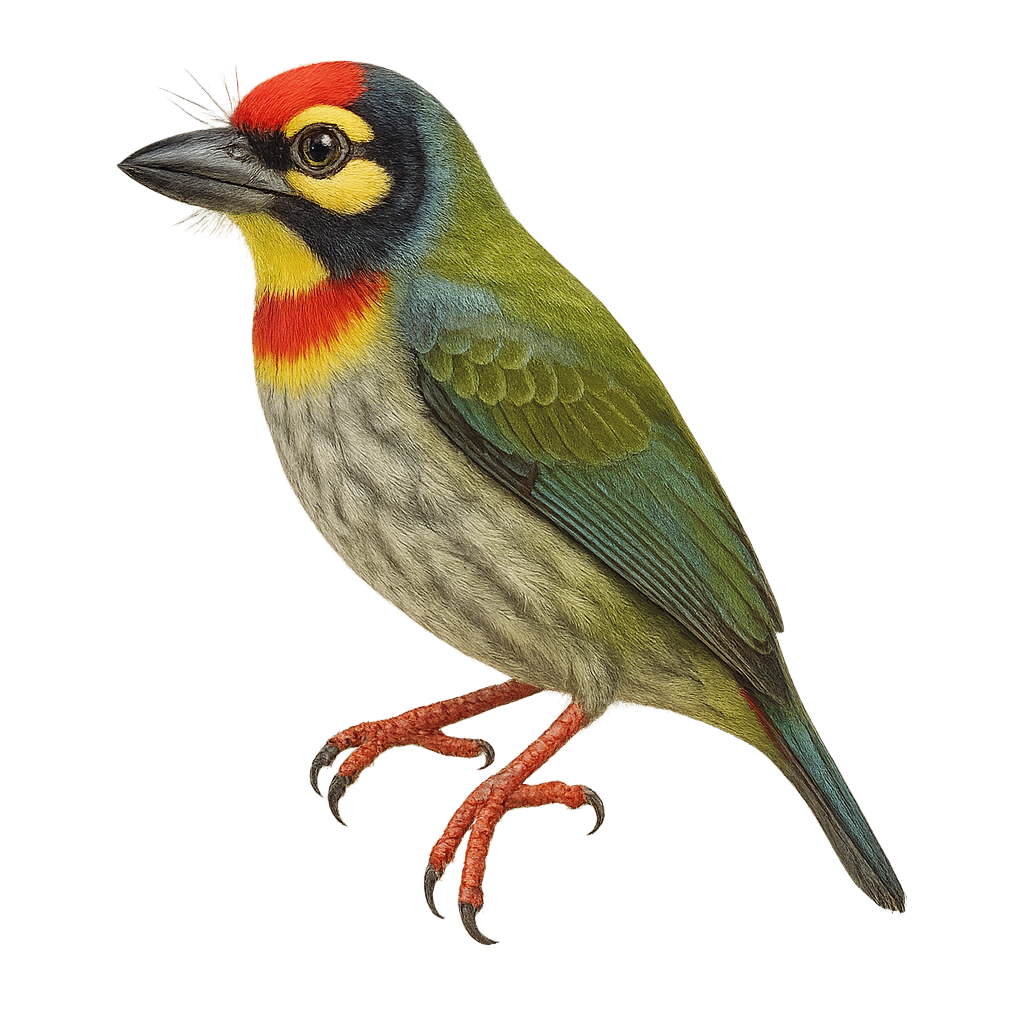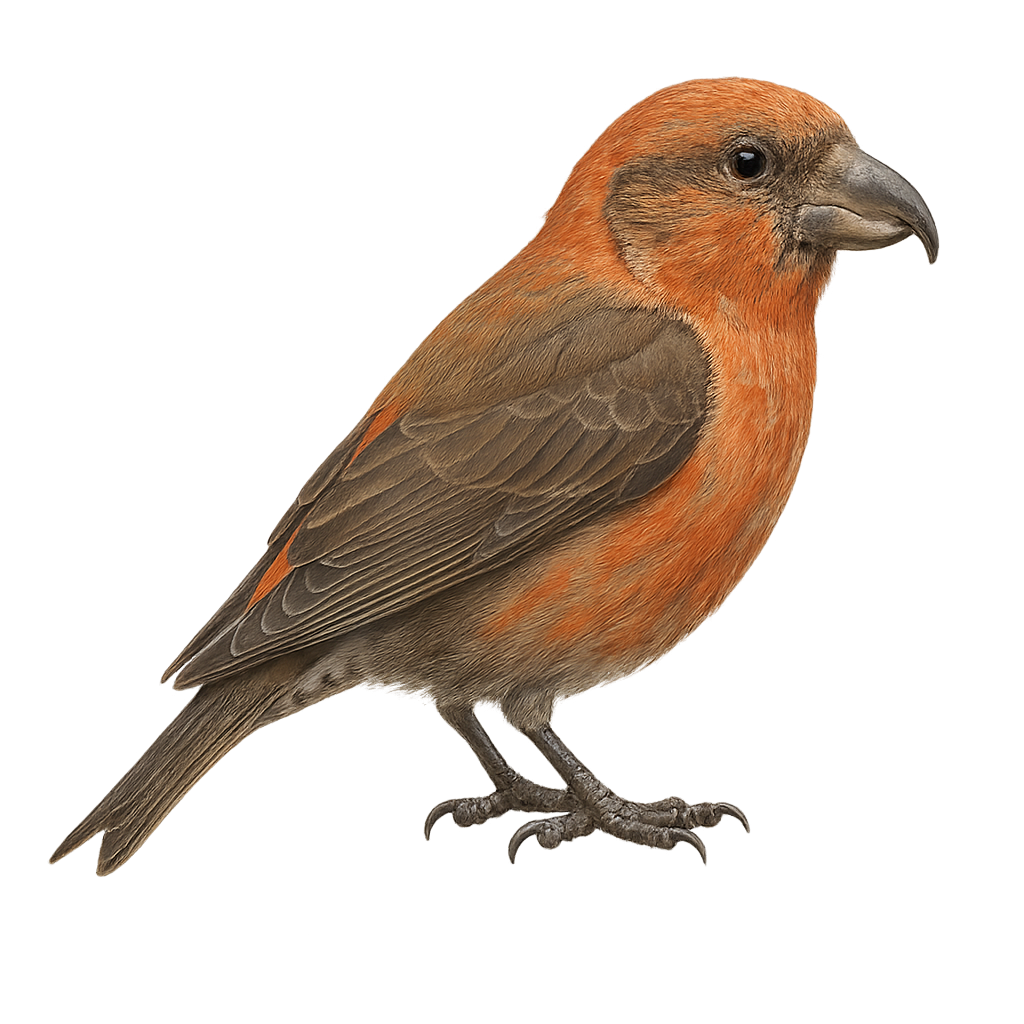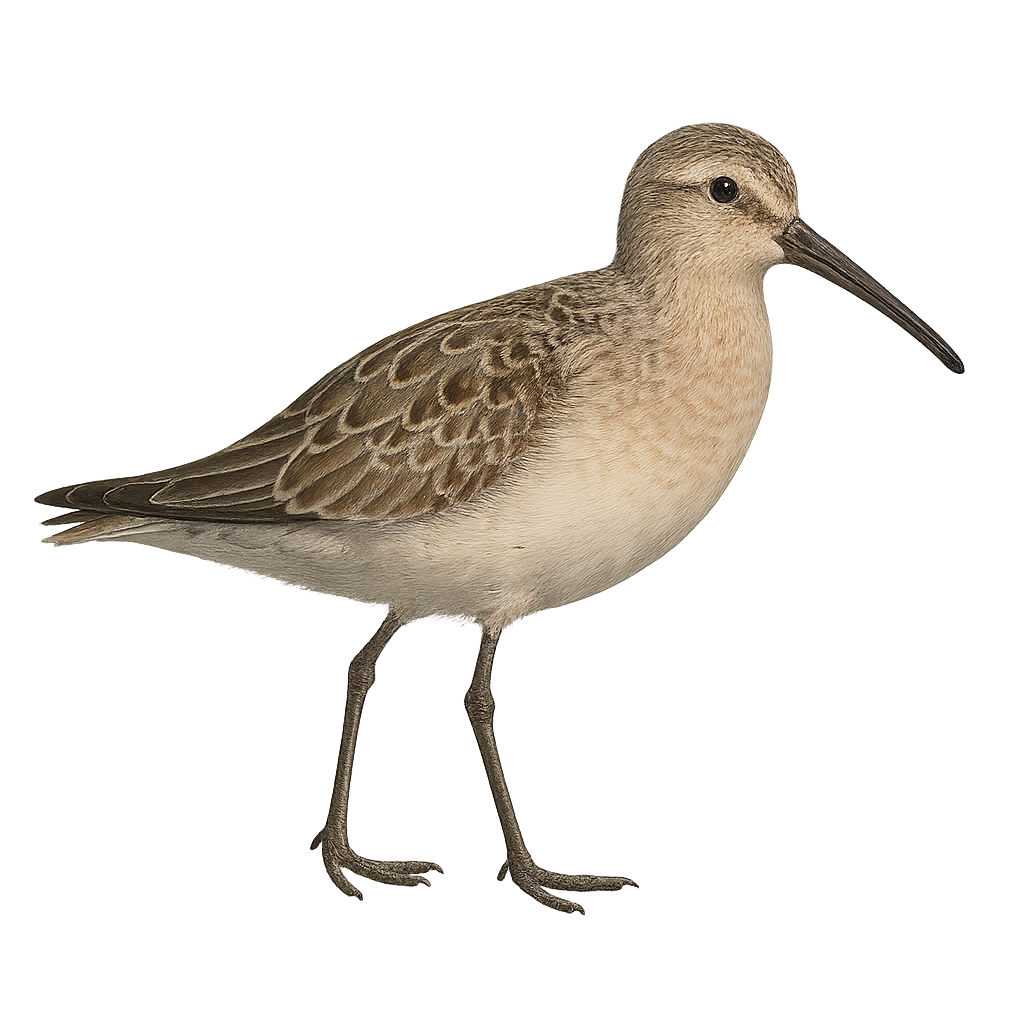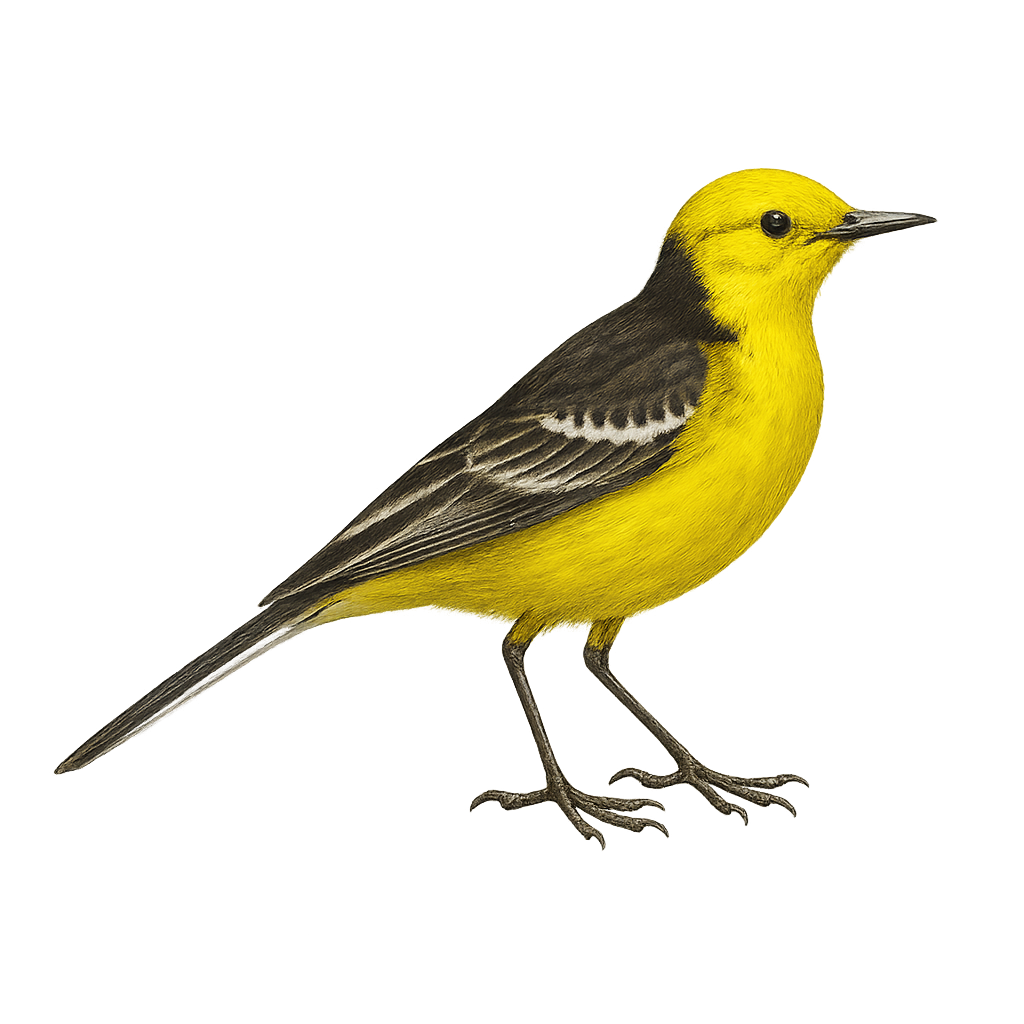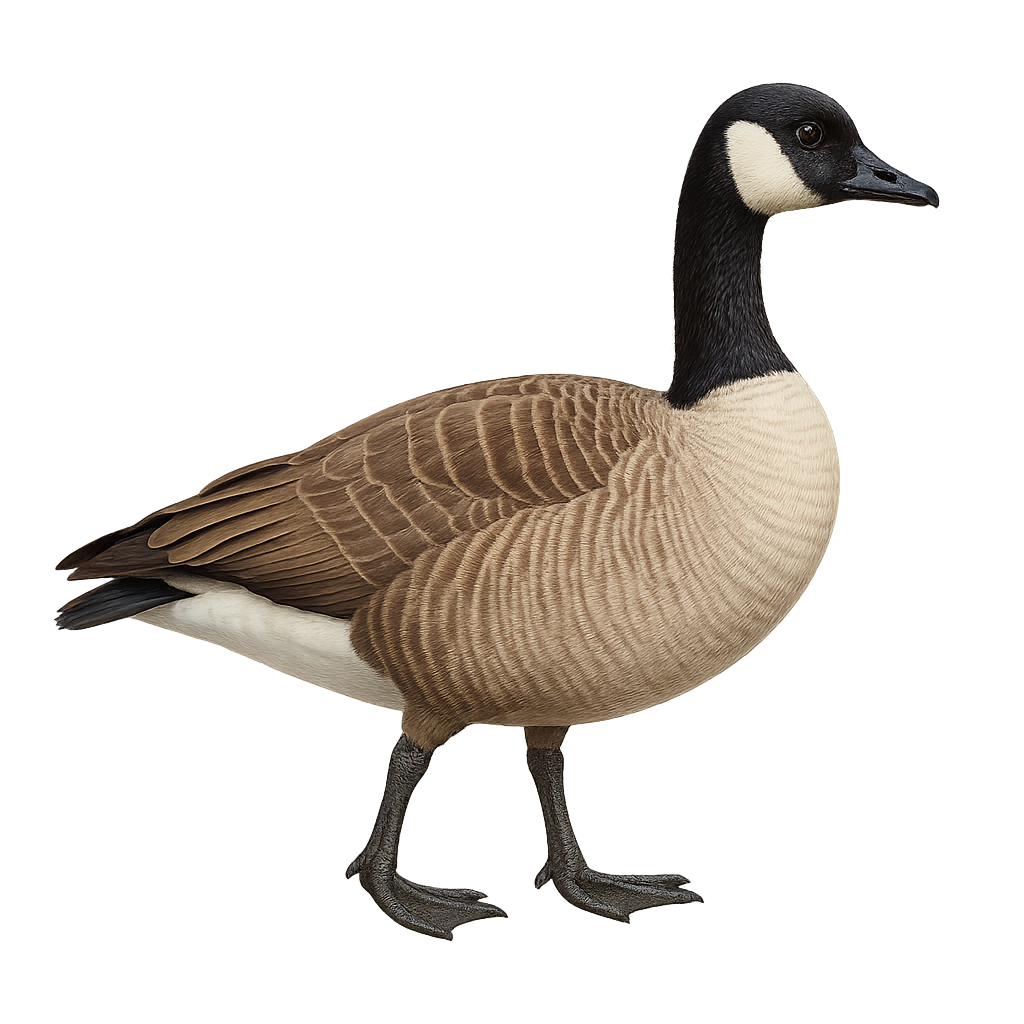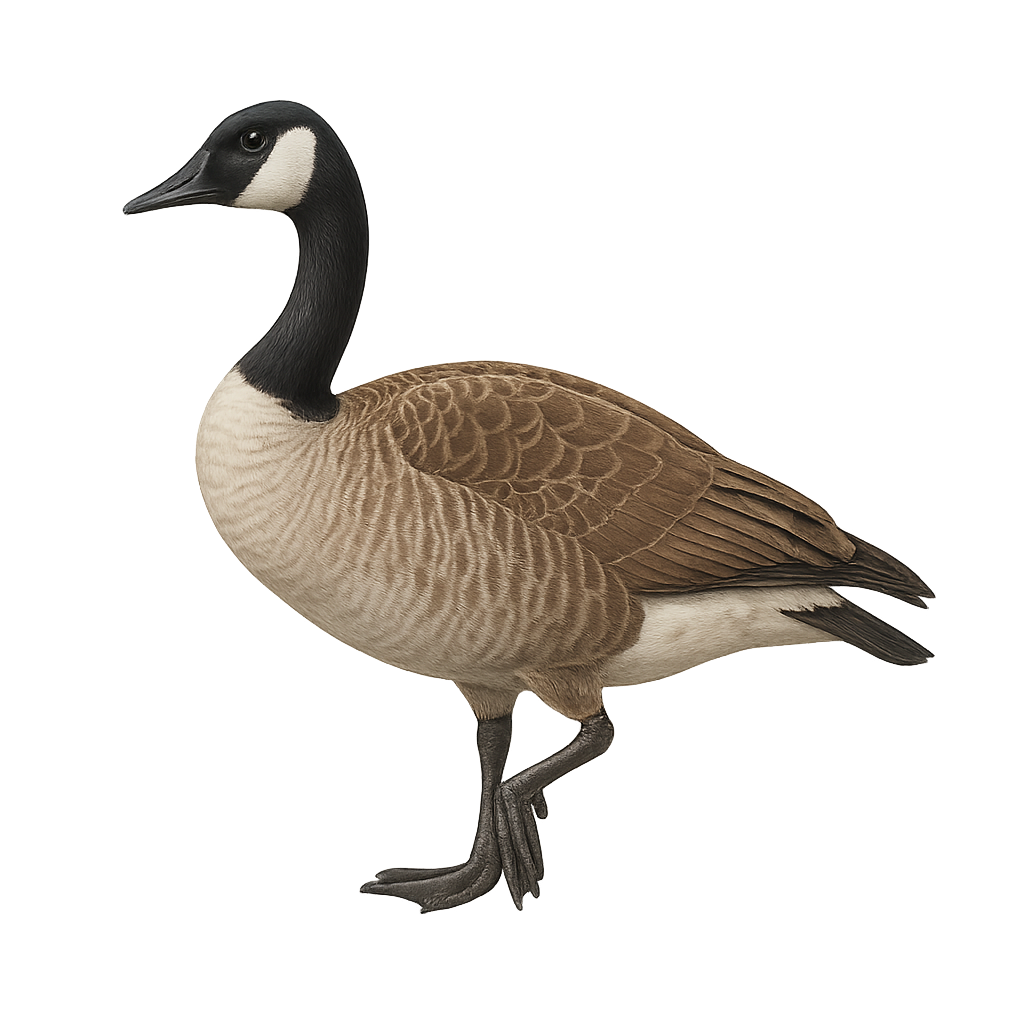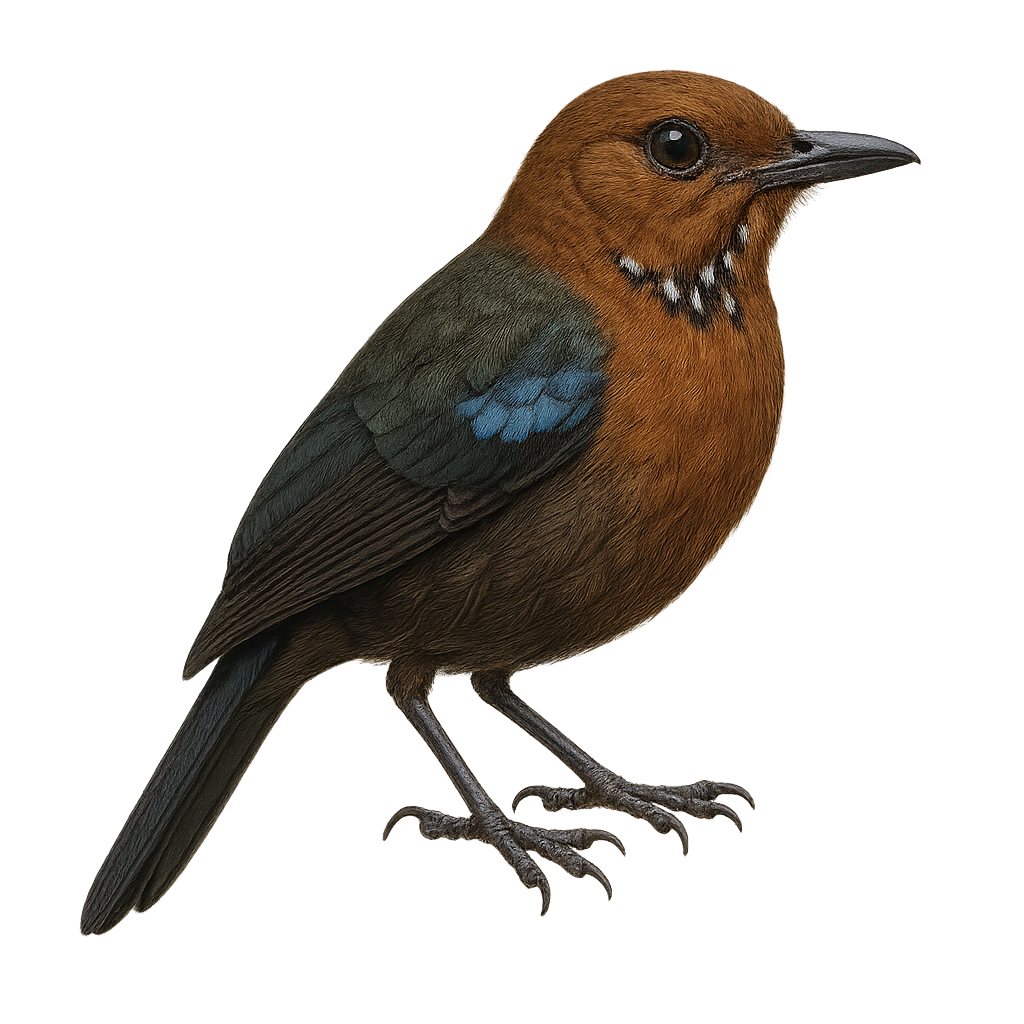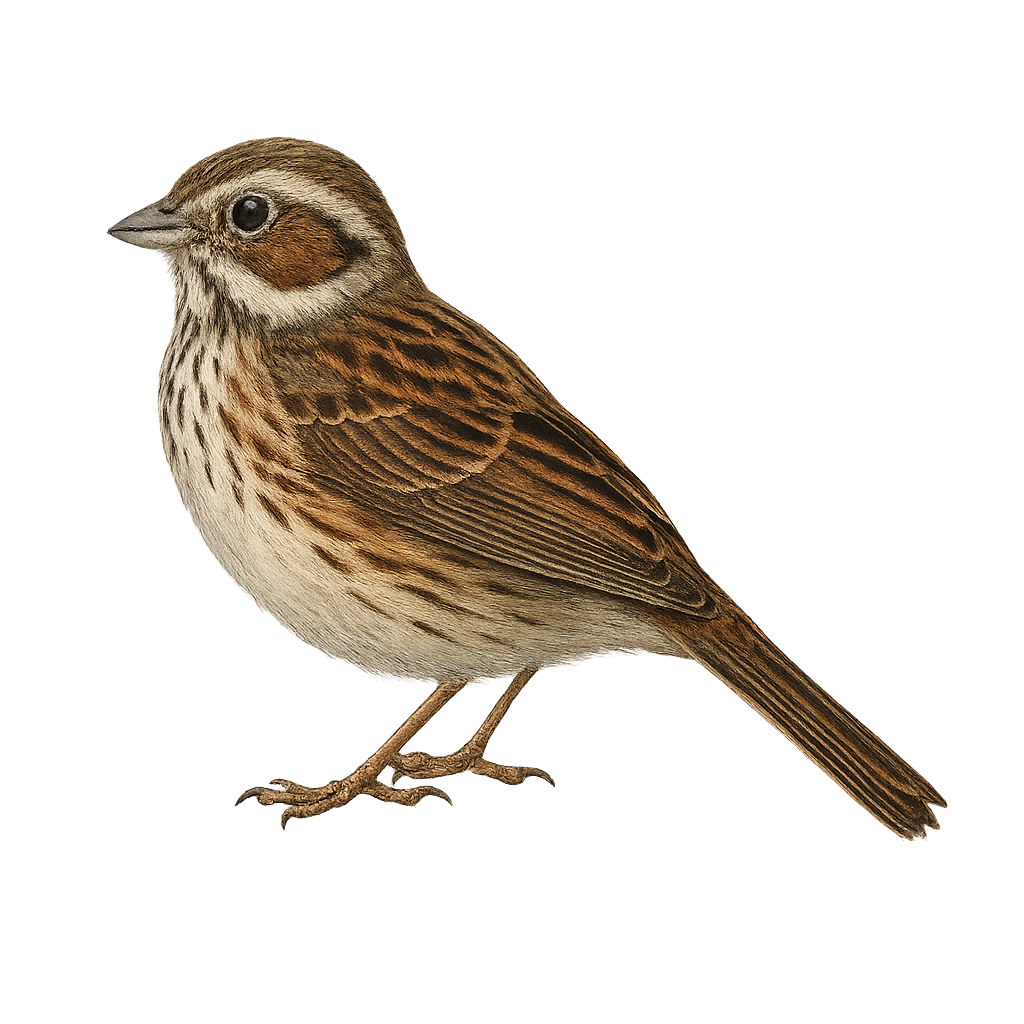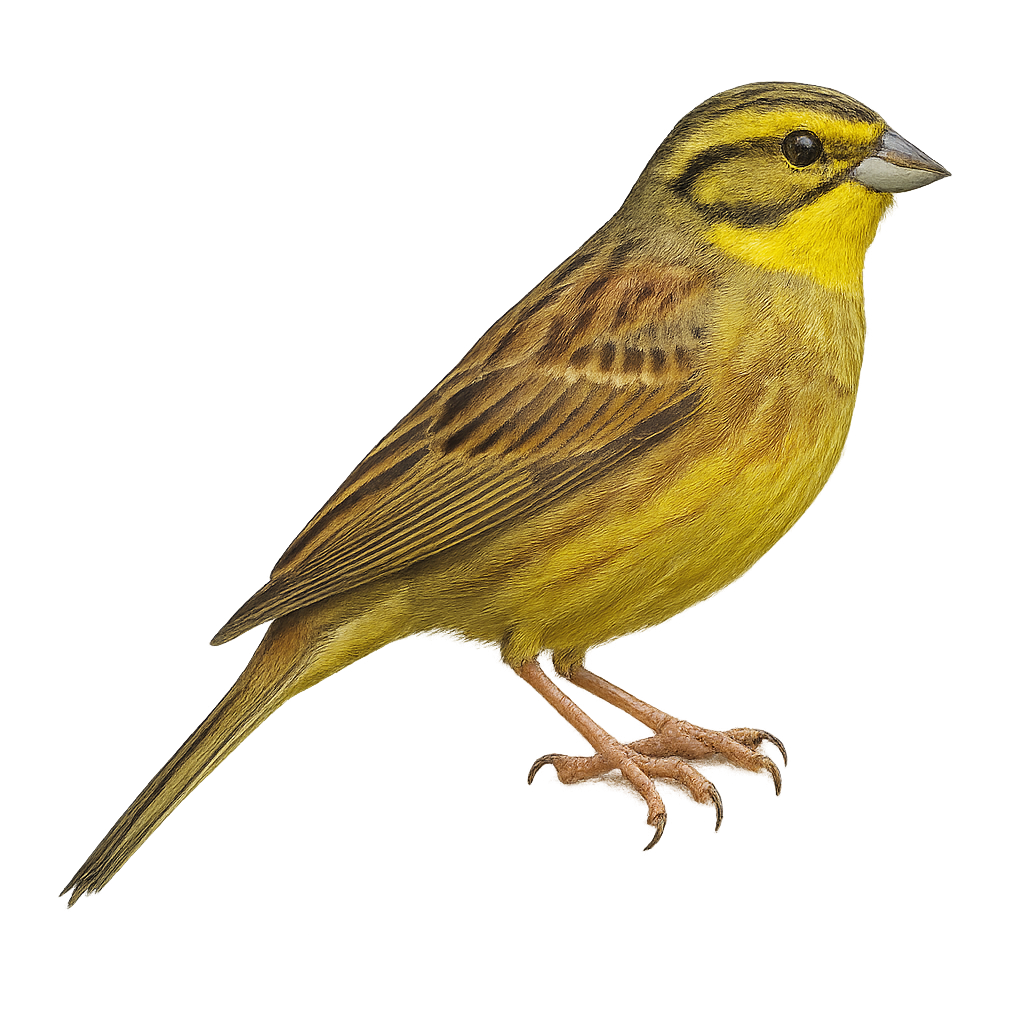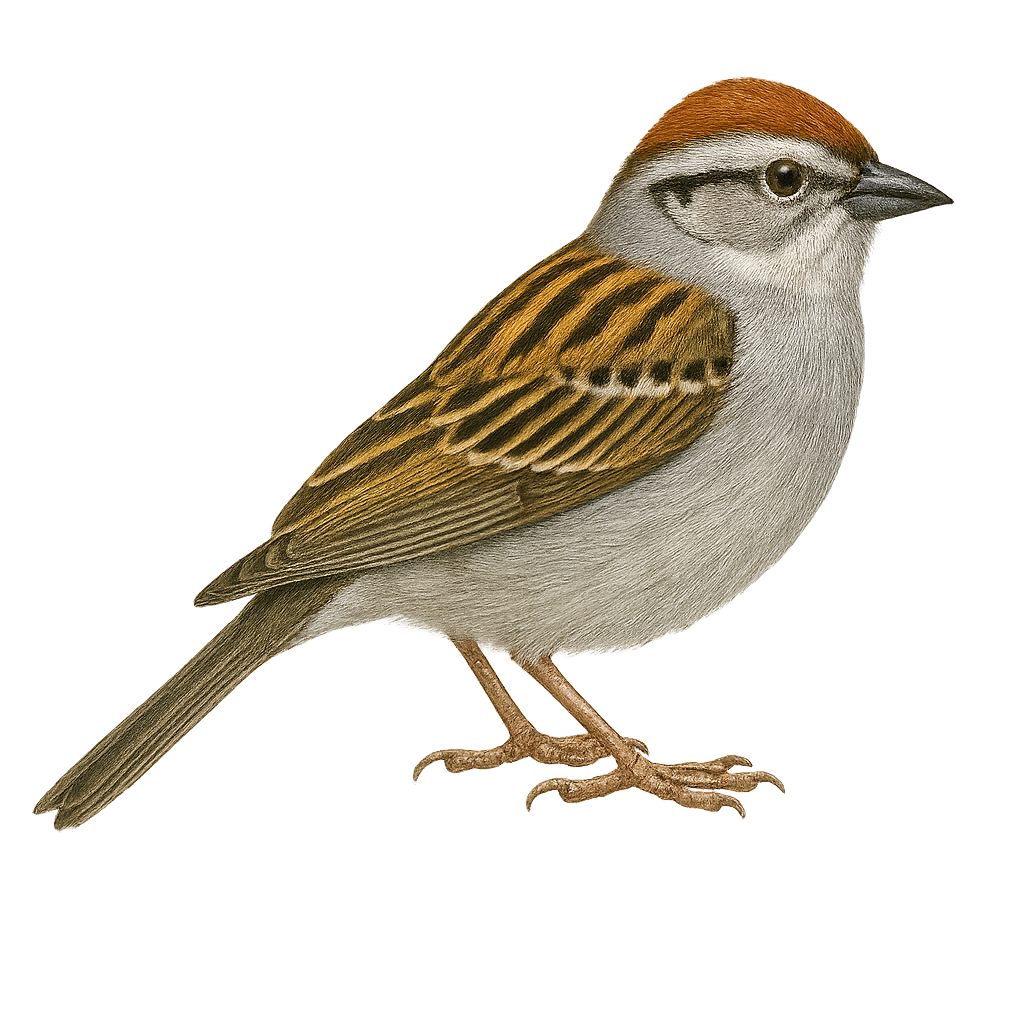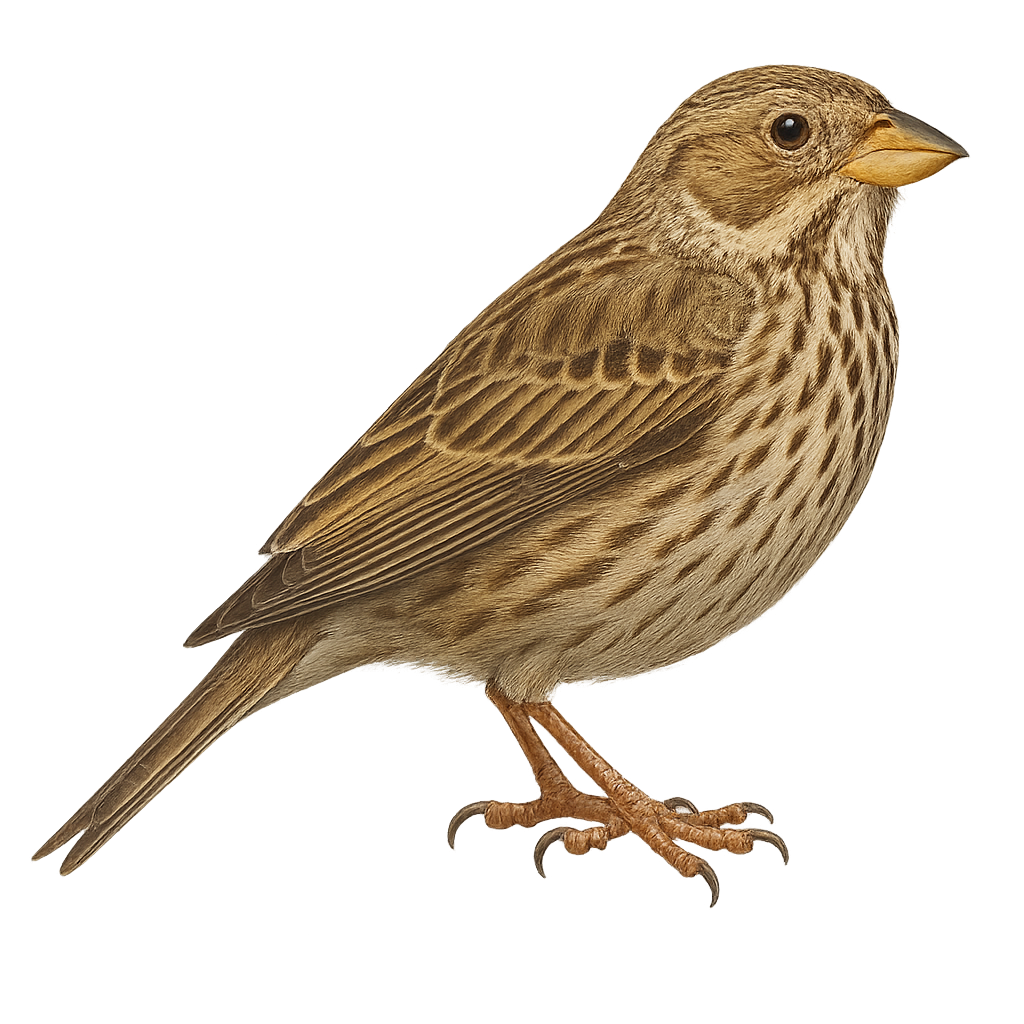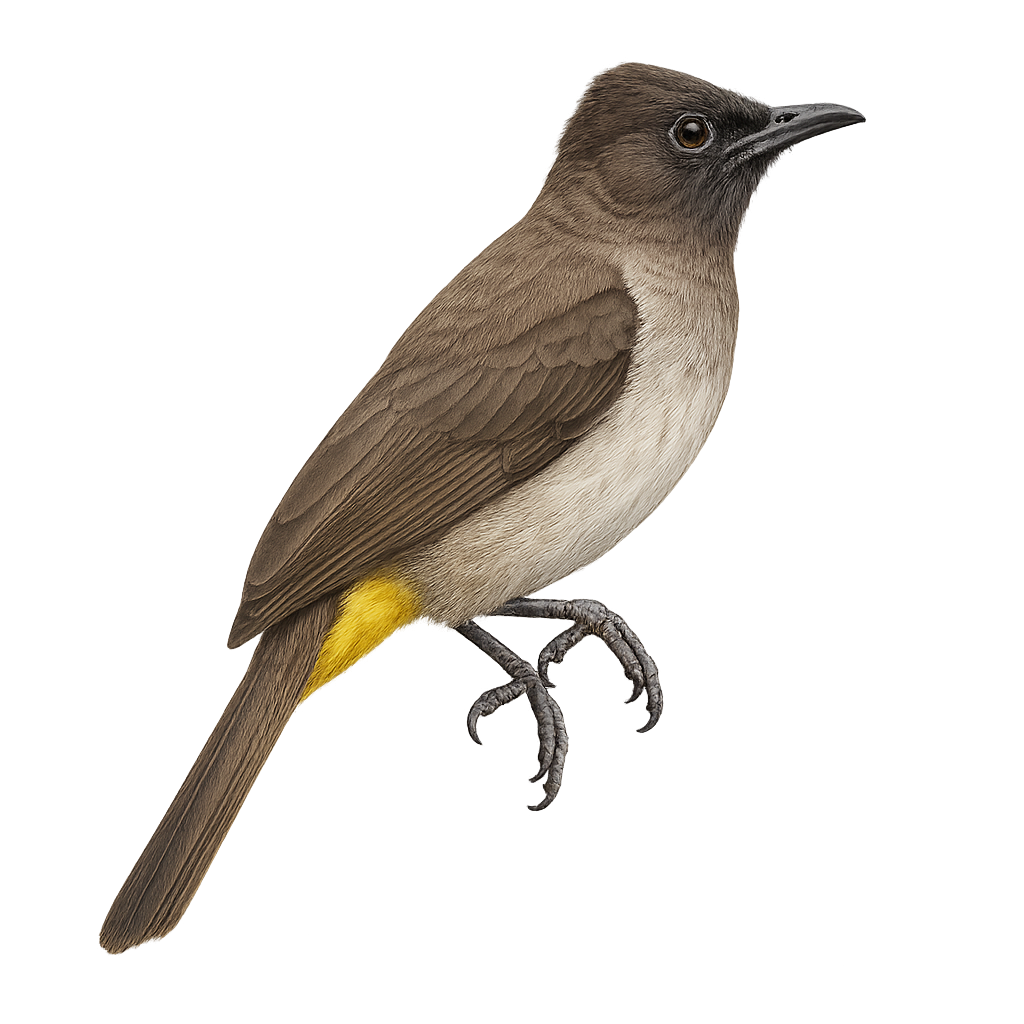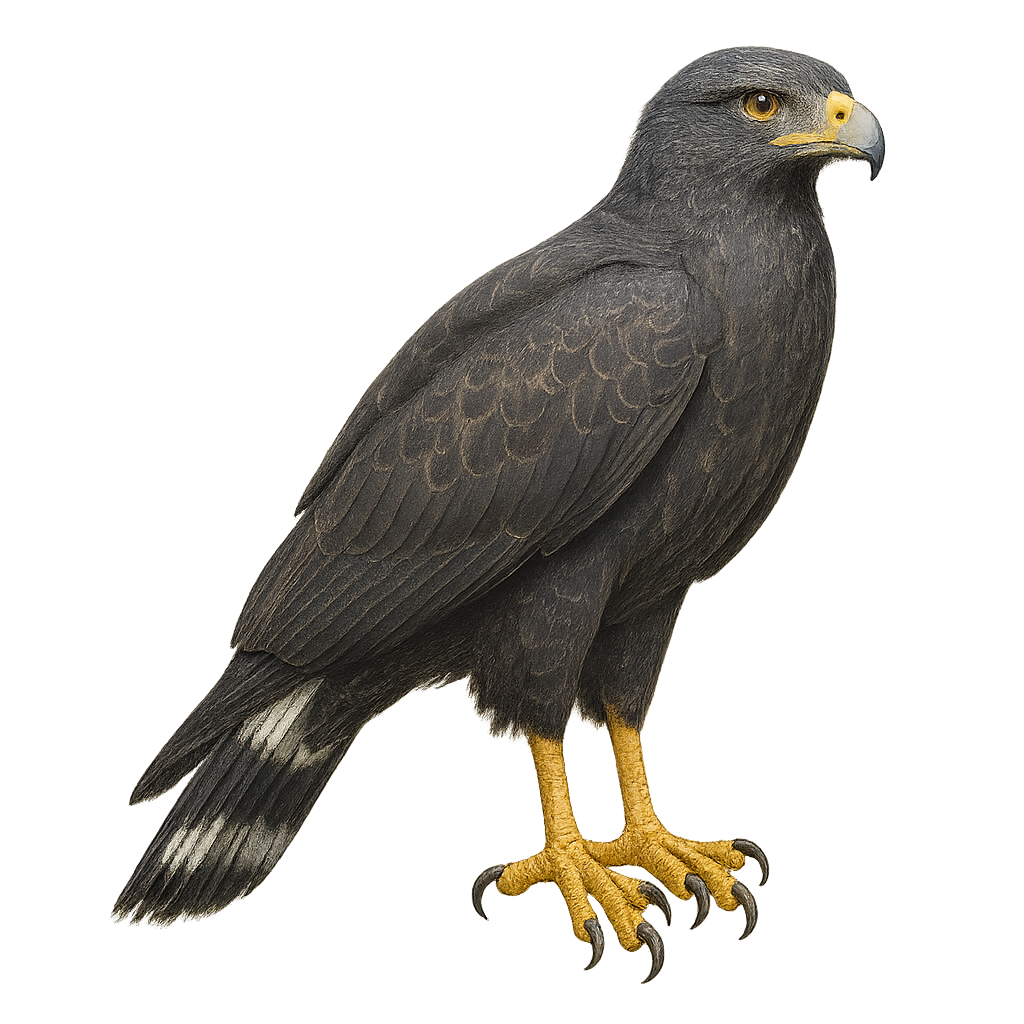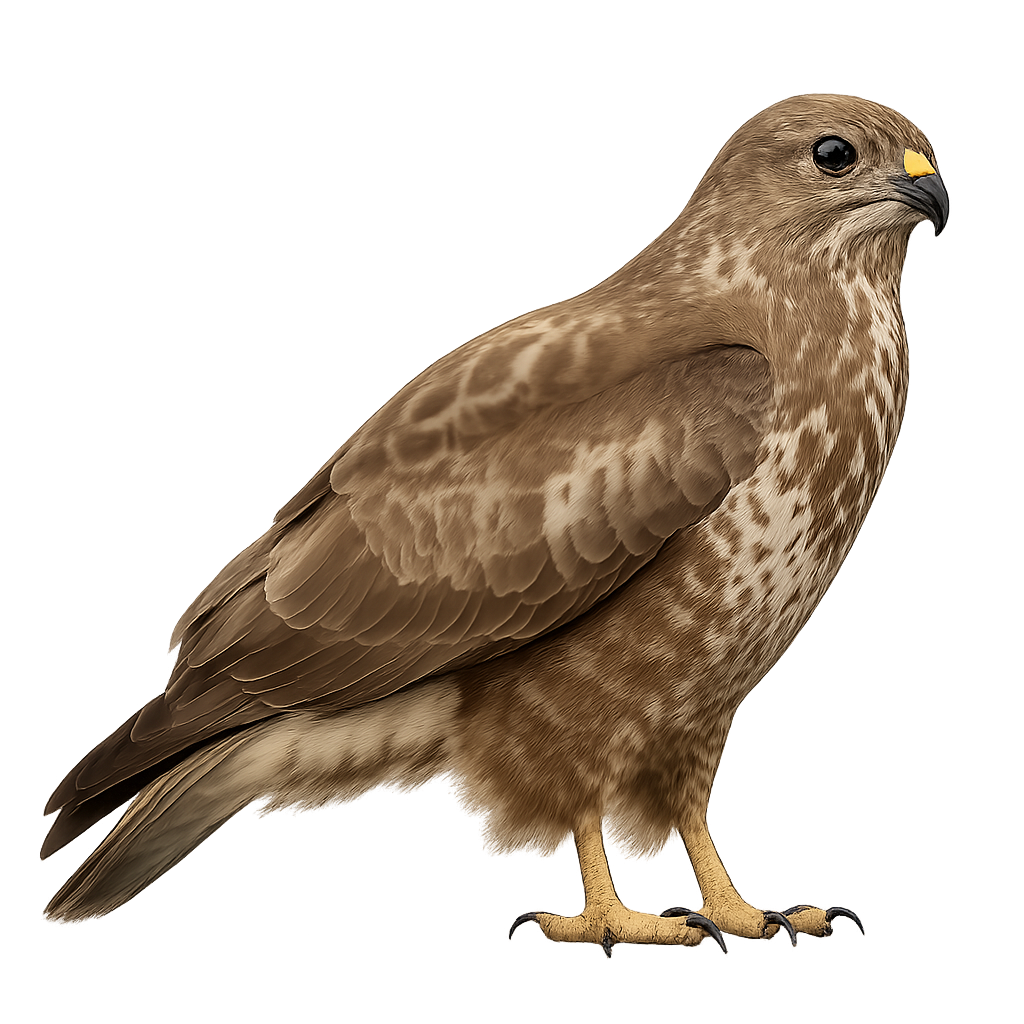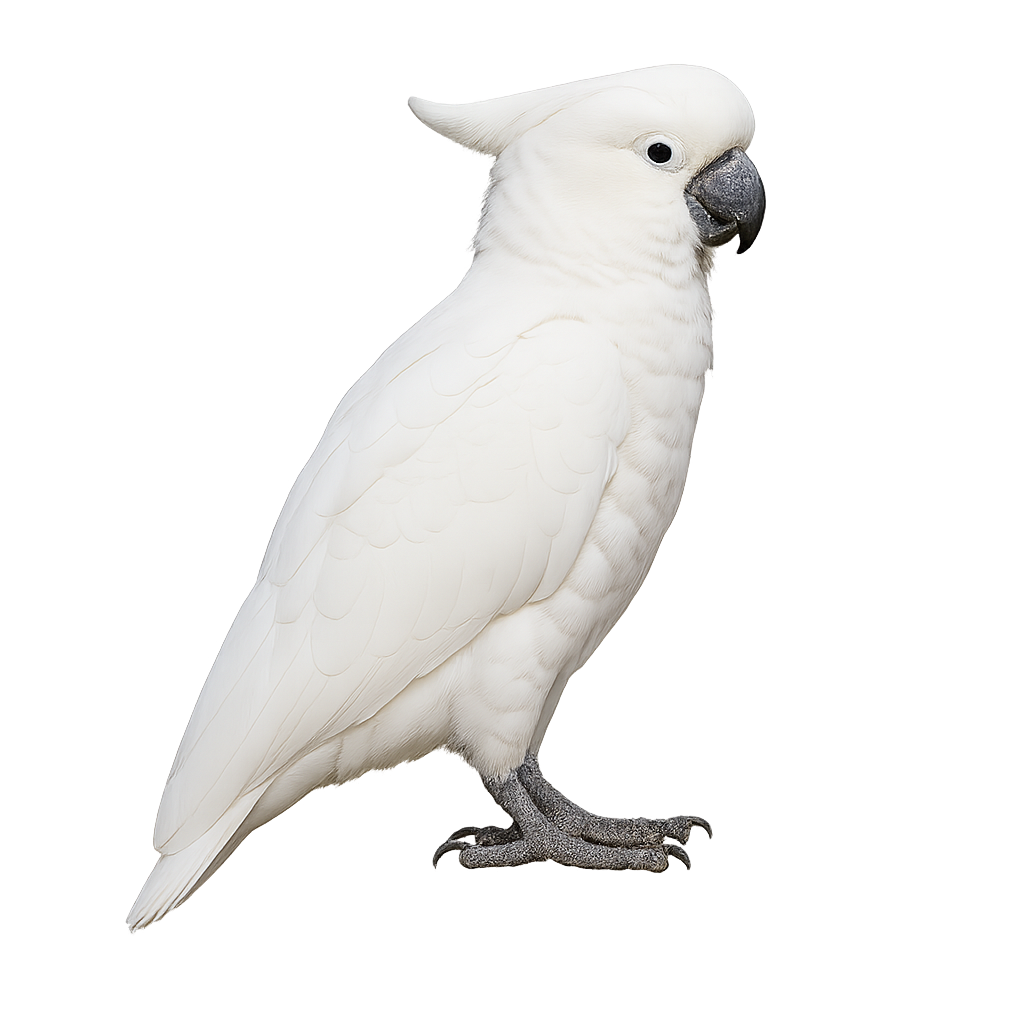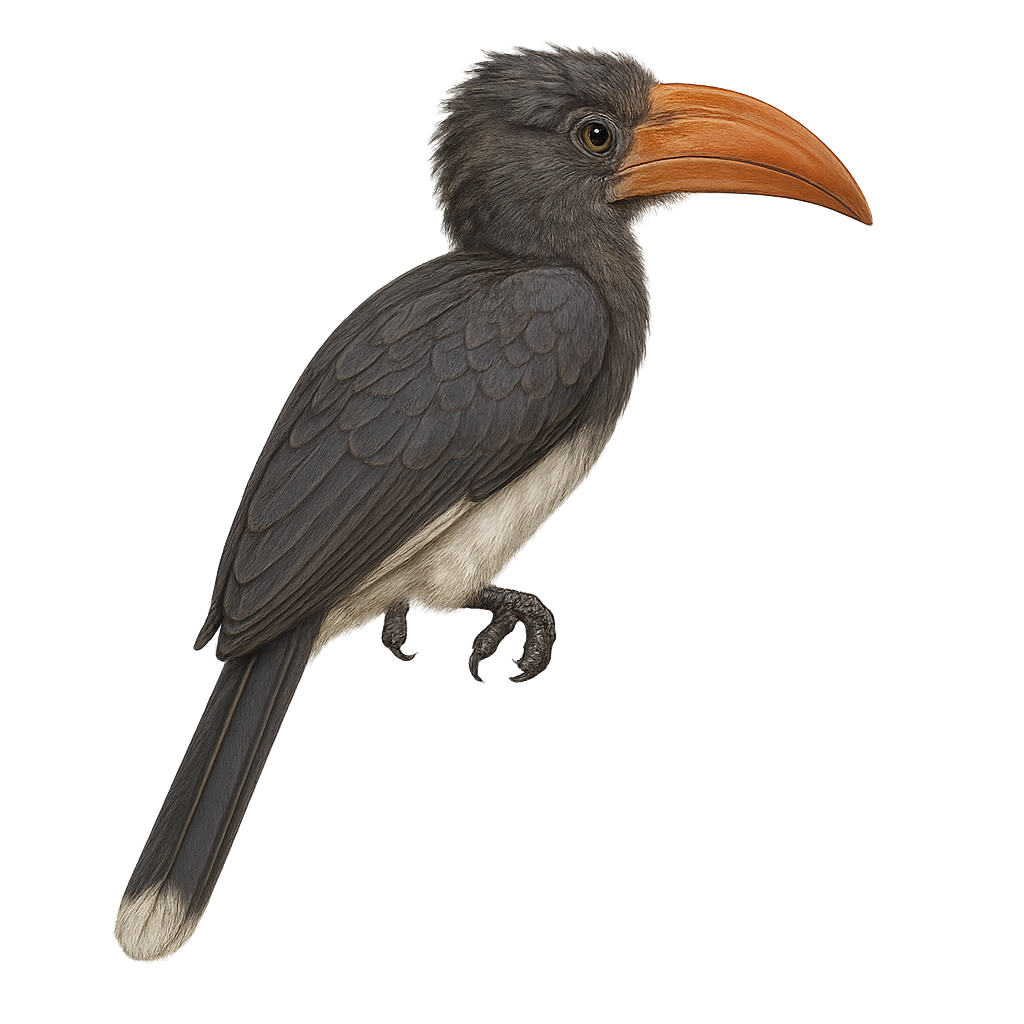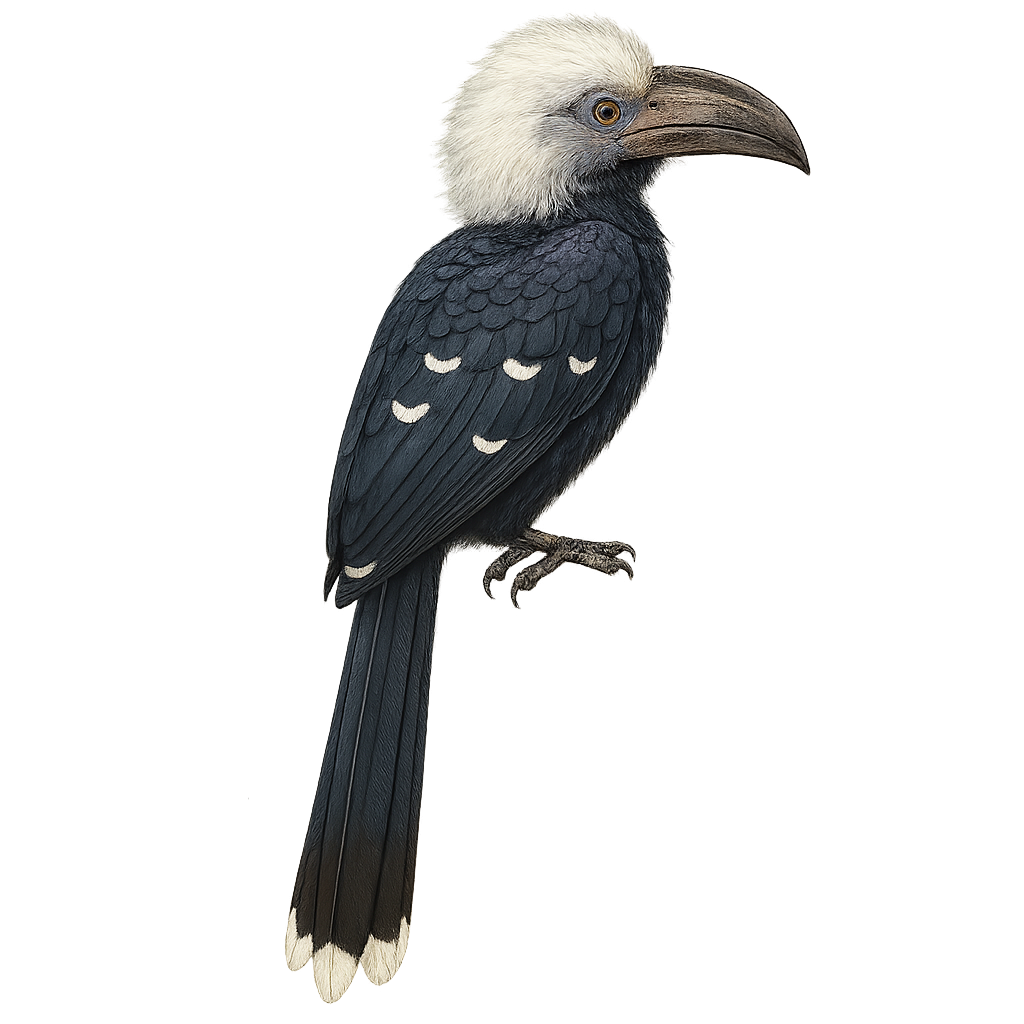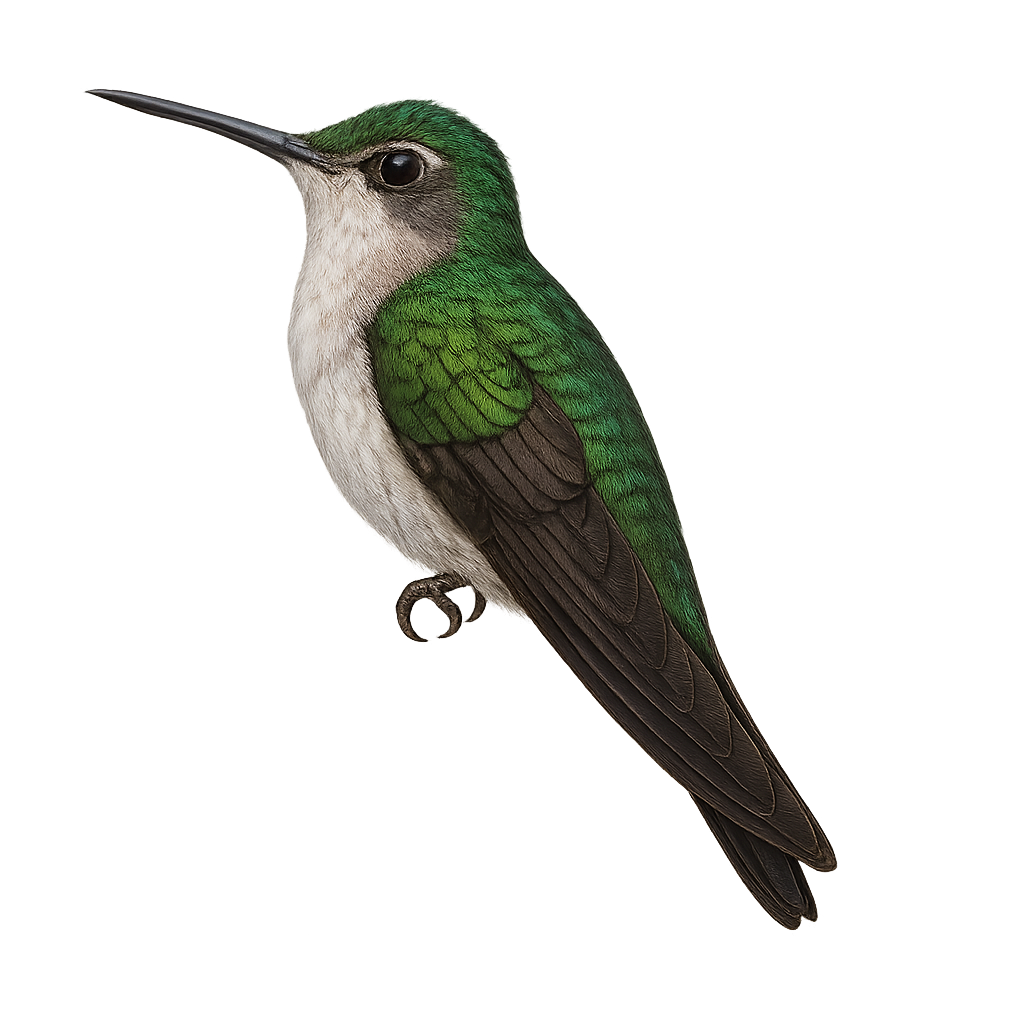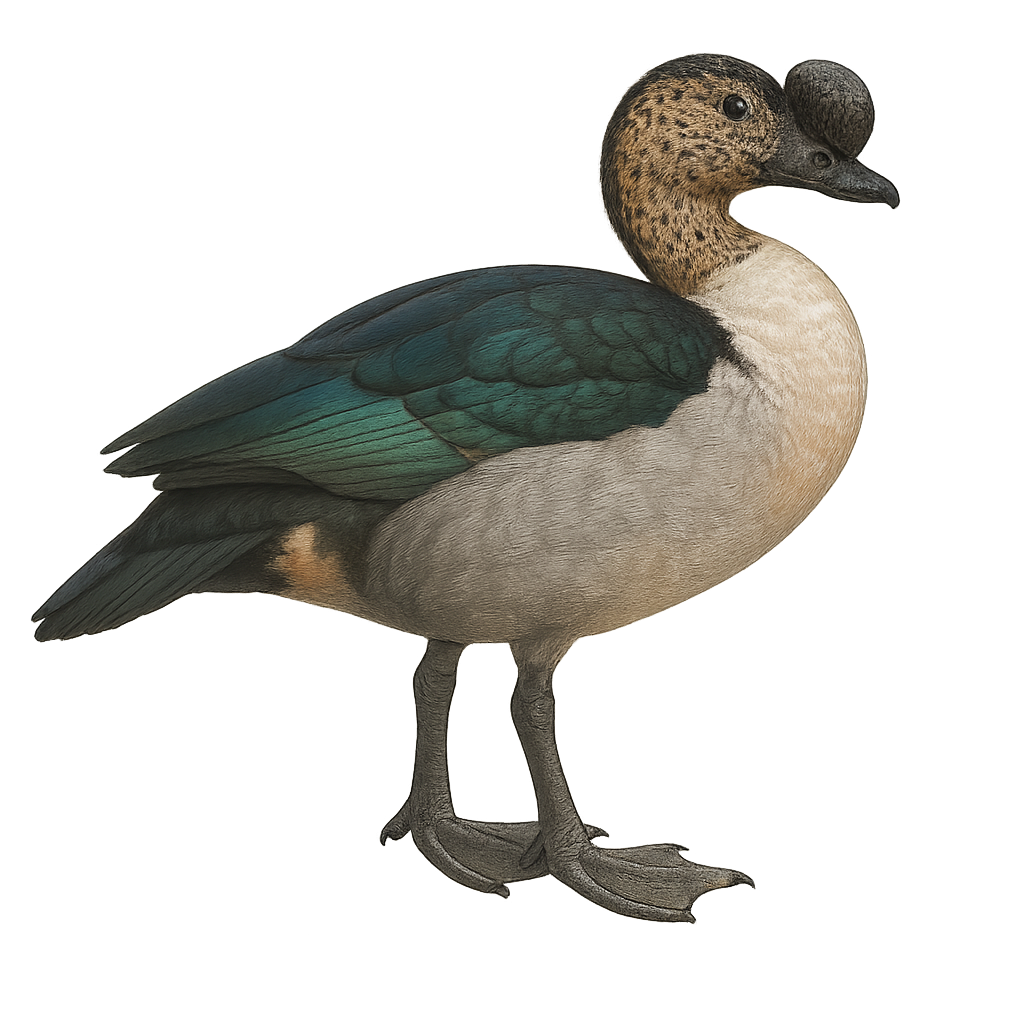The Greater Spotted Eagle is an imposing raptor, recognizable by its dark plumage and robust silhouette. This large eagle is mainly found in Eastern Europe and Asia, where it hunts large mammals, birds, and sometimes even reptiles. It mainly inhabits open landscapes such as meadows, steppe areas, and marshes. Its powerful call, which is the source of its name, is often seen as a symbol of strength and sovereignty in local cultures.
During the breeding season, the Greater Spotted Eagle performs majestic flights and powerful calls to mark its territory and attract a mate.
The Changeable Hawk-Eagle, or Nisaetus cirrhatus, is a majestic bird of prey found primarily in South and Southeast Asia. It is recognizable by its distinctive crest and dark brown plumage with lighter patterns on the belly. This raptor is often observed in dense forests, where it hunts a variety of prey, ranging from small mammals to birds. Its flight is powerful and graceful, allowing it to soar at great heights. Although generally solitary, it can sometimes be seen in pairs, especially during the breeding season. The Changeable Hawk-Eagle is a symbol of power and freedom in many local cultures.
The Cape Long-billed Lark is a bird endemic to South Africa, well adapted to arid and semi-arid environments. It is characterized by its long, curved bill, which it uses to probe the ground for insects and seeds. Its plumage is generally brown with lighter shades on the belly, providing excellent camouflage in its natural habitat. Often seen alone or in small groups, it moves quickly on the ground. Although discreet, it is known for its melodious song, often delivered from a high perch. Its adaptability to harsh conditions makes it a resilient species, although its habitat is threatened by agricultural expansion.
The Cotton Pygmy Goose is a small, tree-dwelling duck often mistaken for a goose due to its English name. It is identifiable by the male's striking black and white plumage, while the female displays more subdued shades of brown and grey. It primarily inhabits the wetlands of South and Southeast Asia, feeding on aquatic plants and small invertebrates. Its small size allows it to navigate dense vegetation with ease. Although its flight is swift and direct, it spends much time swimming on the water's surface. The species is generally discreet but can be seen in small groups.
The Chestnut-eared Aracari is a colorful bird from the Ramphastidae family, known for its vibrant plumage and distinctive bill. It features bright colors with shades of green, yellow, and red, along with its characteristic chestnut-colored ear patches. This bird measures about 34 to 45 cm in length. It primarily inhabits the tropical rainforests of South America, notably in Brazil, Bolivia, Paraguay, and Argentina. The Chestnut-eared Aracari is a social bird, often seen in small groups. It mainly feeds on fruits, but also consumes insects and small vertebrates. Its presence is an indicator of the health of tropical forests, as it plays a crucial role in seed dispersal.
The Curl-crested Aracari is a captivating bird belonging to the Ramphastidae family. It is distinguished by its vibrant plumage and a unique curly crest on its head, giving it a distinctive appearance. Its long, colorful bill, typical of toucans, plays a crucial role in its diet, which mainly consists of fruits, but also includes insects and small vertebrates. This bird primarily inhabits the tropical rainforests of South America, particularly in Brazil. It is often seen in small groups, moving agilely among the trees. Although its conservation status is concerning due to deforestation, it remains a vibrant symbol of Amazonian biodiversity.
The Collared Aracari is a colorful bird from the toucan family, recognizable by its long, curved beak adorned with distinctive patterns. It features primarily black plumage with a red chest band and a bright yellow belly. This bird measures about 40 to 45 cm in length and weighs between 190 and 275 grams. It inhabits the tropical rainforests of Central and South America, feeding on fruits, insects, and occasionally small vertebrates. Sociable by nature, it often moves in small family groups. Although relatively common, deforestation poses a threat to its natural habitat.
The Crested Argus, or Rheinardia ocellata, is a fascinating bird belonging to the Phasianidae family. This large pheasant is primarily known for its spectacular plumage and long tail feathers adorned with eye-like patterns reminiscent of a peacock. Males, larger than females, can reach up to 2 meters in length, including the tail. They sport a brown plumage with intricate patterns, while females are more discreet with brown and gray hues. The Crested Argus inhabits the dense tropical forests of Southeast Asia, particularly in Vietnam, Thailand, and Malaysia. This bird is mainly terrestrial, feeding on seeds, fruits, and insects. Unfortunately, it is threatened by deforestation and hunting, leading to a decline in its populations.
The common waxbill, or Estrilda astrild, is a small exotic bird native to sub-Saharan Africa. It is easily recognizable by its grey-brown plumage with a bright red stripe on its belly and around its eyes. Measuring about 11 to 13 cm in length, this bird is often seen in groups in grassy areas, marshes, and gardens. Its conical beak is adapted to its diet mainly consisting of seeds, although it also consumes small insects. The common waxbill is appreciated for its soft and melodious song. Although often kept as an aviary bird, it has also adapted well to various environments outside its native habitat.
The Psilopogon haemacephalus, commonly known as the Coppersmith Barbet, is a small, colorful bird from the Megalaimidae family. It is easily recognized by its bright red head, yellow belly, and green wings. This barbet is often found in the tropical and subtropical forests of South and Southeast Asia. It is famous for its repetitive call that resembles the sound of a hammer striking metal, hence its English name "Coppersmith". These birds are primarily frugivorous but also consume insects. They nest in tree cavities, which they excavate with their strong beaks. Although generally solitary, they can be seen in small family groups.
The crossbill is a passerine bird found primarily in coniferous forests across Europe, Asia, and North America. It is easily recognized by its bright red plumage in males and its crossed bill, which allows it to extract seeds from pine cones and other conifers. This small bird is often seen in groups, primarily feeding on tree seeds. It is also known for its melodious song.
The Curlew Sandpiper, Calidris ferruginea, is a small wader belonging to the Scolopacidae family. It is easily identifiable by its reddish breeding plumage and slightly curved long bill. Outside the breeding season, its plumage turns duller with grayish tones. This migratory bird travels long distances between its breeding grounds in Siberia and its wintering areas in Africa, South Asia, and Australia. It primarily inhabits coastal wetlands, estuaries, and lagoons, feeding on small invertebrates by probing the mud with its bill. The Curlew Sandpiper is a gregarious bird, often seen in large flocks during migration.
The Common Snipe is an elegant small wader, easily recognized by its long, slender bill and mottled brown and beige plumage. This bird primarily inhabits marshes, wet meadows, and riverbanks in Europe, Asia, and North Africa, where it feeds on aquatic invertebrates, mainly worms, insects, and mollusks. The Common Snipe uses its long, flexible bill to probe the mud in search of food.
It is a migratory bird, leaving the cold regions of winter to move to more temperate zones for breeding. While its population is relatively stable, the Common Snipe is sensitive to habitat changes and water pollution.
The Citrine Wagtail, or Motacilla citreola, is an elegant and colorful bird belonging to the Motacillidae family. It is distinguished by its bright yellow plumage on the belly and chest, contrasting with a gray back and a black head in males during the breeding season. Females and juveniles display duller shades, with gray and brown hues. This bird is often found in wetlands, meadows, and riverbanks, where it primarily feeds on insects and small invertebrates. A migratory species, the Citrine Wagtail breeds mainly in Central Asia and migrates to South Asia for the winter. Its characteristic gait, marked by a tail-wagging movement, makes it easily identifiable.
The Cackling Goose, scientifically known as Branta canadensis leucopareia, is a subspecies of the Anatidae family. It is easily identified by its brown and white plumage, long black neck, and white cheeks. It primarily inhabits wetlands, lakes, and rivers. This species is known for its spectacular migrations in large V-shaped formations. Highly adaptable, it can be found in various environments, including urban parks. Although generally tolerant of human presence, it can become aggressive if threatened, especially during nesting season.
The Cackling Goose, or Branta hutchinsii, is a medium-sized waterfowl belonging to the Anatidae family. Often mistaken for the Canada Goose due to their similar appearance, it is generally smaller with a shorter bill. Its plumage is primarily gray-brown with a distinctive black head and neck, featuring a white chinstrap. It primarily inhabits wetlands, lakes, and rivers, feeding on aquatic plants, seeds, and insects. A migratory bird, it travels long distances between its breeding grounds in Alaska and Canada and its wintering areas in the United States. Although generally wary, it can become accustomed to human presence in protected areas.
The Canada Goose is a large waterfowl species easily identified by its brown body, black head and neck, and distinctive white cheek patch. Often seen in large flocks, they form V-shaped formations during migration. These birds are highly adaptable, inhabiting a range of environments from lakes and rivers to urban parks. Their diet is diverse, including aquatic plants, seeds, and insects. While generally tolerant of humans, they can become aggressive if threatened, especially during nesting season.
The Crossley's Vanga is an endemic bird of Madagascar, belonging to the Vangidae family. It is distinguished by its colorful plumage, blending shades of blue, green, and black, and its robust, slightly hooked beak. This bird primarily inhabits the island's humid forests, where it feeds on insects and small invertebrates. Its melodious and varied song is often heard at dawn and dusk. Although its habitat is threatened by deforestation, the Crossley's Vanga is currently classified as "least concern" by the IUCN. However, it is essential to continue monitoring its populations to ensure its long-term conservation.
The Chestnut-eared Bunting, Emberiza fucata, is a small bird from the Emberizidae family. It is easily identifiable by its distinctive chestnut ear patches and brown and gray plumage. This passerine bird primarily inhabits open areas such as grasslands and cultivated fields, feeding on seeds and insects. It is commonly found in Asia, especially in China, Japan, and Russia. During the breeding season, the male sings to attract a mate, subsequently building a well-hidden nest in low vegetation. Although its conservation status is currently "least concern," habitat destruction could pose future threats.
The Cirl bunting is a small passerine in the bunting family Emberizidae, measuring 16–17 cm in length, with streaked brown plumage and a yellow head marked by a black crown and dark throat. It inhabits sunny grasslands, hedgerows and scrub, feeding mainly on seeds and insects. During breeding, it builds a nest in low bushes and the male sings from an exposed perch to attract the female and defend its territory.
The Chipping Sparrow, or Spizella passerina, is a small songbird common in North America. It is easily identified by its rufous cap, gray cheeks, and black eye line. Its plumage is primarily brown with streaks on the back, while the underside is lighter. It inhabits open areas, gardens, and parks, often near human settlements. This sparrow is known for its simple yet melodious song, often heard in spring and summer. It primarily feeds on seeds and insects, which it finds on the ground or in shrubs. During the breeding season, it builds a cup-shaped nest in shrubs or low trees.
The corn bunting (Emberiza calandra) is a passerine bird in the family Emberizidae. It is a large, bulky bunting, 16–19 cm long, with heavily streaked buff-brown plumage. Found in open farmland, weedy wastelands and meadows across southern and central Europe, North Africa and Asia, it feeds mainly on seeds, supplemented by insects during the breeding season. During breeding it builds its nest on or near the ground, and the male sings from an exposed perch to attract the female and defend its territory.
The Pycnonotus barbatus, or Common Bulbul, is a medium-sized bird, measuring about 20 cm in length. It is easily recognizable by its black head, white belly, and bright yellow throat. This bird is highly adaptable and can be found in various habitats, from forests to urban gardens. It is known for its melodious and varied song, often heard at dawn. The Common Bulbul is a sociable bird, often seen in small groups. It primarily feeds on fruits, insects, and nectar. Its ability to adapt to different environments makes it a common species in many parts of sub-Saharan Africa.
The Common Black Hawk, scientifically known as Buteogallus anthracinus, is a medium-sized raptor found primarily in coastal regions and riparian forests of Central America and the southern United States. Its plumage is predominantly black with bluish sheen, and it features a distinctive white band on its tail. This bird of prey is often seen soaring above waterways, hunting for prey such as fish, crabs, and small vertebrates. Its call is a sharp, piercing whistle. The Common Black Hawk is territorial, often solitary or in pairs, and builds its nest in trees, usually near water.
The Common Buzzard is a medium-sized diurnal raptor, easily recognizable by its often spotted and banded brown and white plumage, which gives it a particularly variable appearance from one individual to another. It primarily inhabits open forests, hedgerows, and agricultural landscapes in Europe, Asia, and North Africa. The Common Buzzard feeds on small mammals, birds, and occasionally insects, which it hunts on the ground, often perched on a tree or pole, waiting for the right moment to swoop down on its prey.
This raptor is known for its characteristic flight, often soaring in the sky in wide circles. The Common Buzzard is also a migratory bird, leaving some of its breeding grounds in Europe to migrate to warmer regions during the winter. While the population of the Common Buzzard is stable in many areas, it can be affected by habitat loss and human persecution.
Cockatoos are exuberant and colorful birds, known for their spectacular crests and fascinating social behavior. These birds are native to Australia, New Guinea, and neighboring islands. Their plumage, often white with brightly colored accents on the crest or tail, makes them particularly attractive. They are also famous for their intelligence and ability to mimic sounds, including human speech, making them popular as pets.
Cockatoos live mainly in forests, savannas, and coastal areas. They are social birds that form often noisy groups, spending their days searching for food, perching, and interacting with other members of their group. Although some species of cockatoos are protected due to habitat loss and poaching, they remain an iconic symbol of exotic birds.
The Crowned Hornbill, or Lophoceros alboterminatus, is a medium-sized hornbill from sub-Saharan Africa, easily recognized by its reddish-orange bill topped with a small casque, its white chest, and white wingtips that are noticeable in flight. It inhabits coastal forests, woodlands, and forest edges from Kenya to northeastern South Africa. Omnivorous, it feeds on fruits, insects, and occasionally small animals. It is often seen in pairs or small, noisy groups. Although relatively common and adaptable to secondary forests, the Crowned Hornbill is still affected by habitat loss.
The Cassin's Hornbill is a fascinating bird belonging to the Bucerotidae family. It is distinguished by its black and white plumage, large bill, and distinctive crest. This bird is primarily arboreal, living in the humid tropical forests of Central Africa. It mainly feeds on fruits, but also insects and small animals. Known for its loud vocalizations and social behavior, it is often observed in small groups. Although relatively common in its natural habitat, deforestation poses a threat to its population. Its ability to adapt to different forest environments allows it to survive despite environmental pressures.
The Curve-winged Sabrewing, scientifically known as Pampa curvipennis, is a medium-sized hummingbird found primarily in the tropical and subtropical forests of Mexico. It is characterized by its curved wings and relatively long tail. The plumage is generally green with metallic sheens, and it features a contrasting white throat. Both males and females look similar, although males are slightly larger. They primarily feed on nectar but also consume small insects to supplement their diet. Their fast and agile flight allows them to move easily between flowers.
The Comb Duck, Sarkidiornis melanotos, is a medium-sized waterfowl easily identified by the prominent knob on its bill, particularly in males. It features a distinctive black and white plumage with metallic sheen on its wings. This duck primarily inhabits wetlands, lakes, and slow-flowing rivers in sub-Saharan Africa and South Asia. Social by nature, it is often seen in small groups. Its diet mainly consists of aquatic plants, seeds, and insects. Although generally tolerant of humans, it can become wary if disturbed. Conservation of its habitat is crucial for its survival, as it is vulnerable to environmental changes.


